The debate between sustainable aviation fuels (SAF) and hydrogen is still ongoing in aviation. However, you can’t have SAF without hydrogen. Probably.
I have a confession to make: I’m intrigued by all-things Supply Chain Management. Simplistically-put, SCM is about the little or big things that have to happen, to make what you see happening possible. This is way too big a topic to analyze here – people actually get degrees in SCM. But supply chains are multi-layered, so just when you think you’re beginning to understand them, another layer crops up. And it shows you that you still have much to learn.
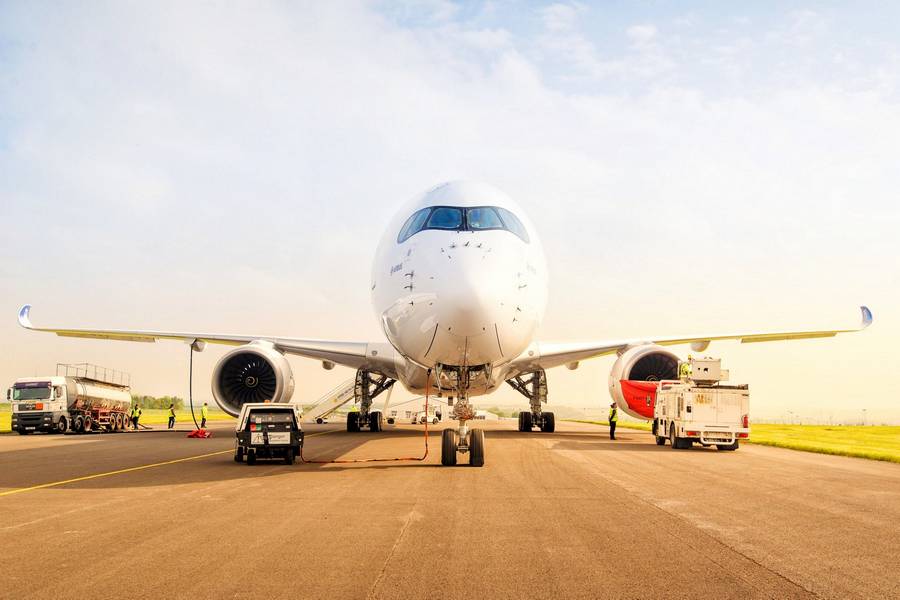
The debate about sustainable aviation fuels versus hydrogen is, in part, about aircraft systems and integration technology. And there is no question that on that front, SAF trounces hydrogen (in any form) comprehensively. This is because SAF are so close, in composition, to the fuels we have today. There are some minor challenges with them, but they are details that engineers know how to deal with.
But this is also, in very large part, a supply-chain debate. And that is where the choice between sustainable aviation fuels and hydrogen… isn’t really a choice. Not the way you might think, anyway. This is because scaling up SAF meaningfully, will most likely involve hydrogen, in its production. This is a process called “Power-to-Liquid” (PtL).

Hydrogen As Part of Sustainable Aviation Fuels
This is also a bit of an “Airbus Vs Boeing” thing. Airbus are strongly supporting hydrogen, both in fuel cell and combustion forms. Conversely, Boeing have firmly sided with sustainable aviation fuels, saying that hydrogen has too many problems to work. But there seems to have been a gradual change in… language, in the Airbus camp lately. Airbus is increasingly putting emphasis on a “green hydrogen ecosystem”.
As we’ve seen in previous articles, Airbus is still busy trying to make hydrogen work on aircraft. Among other things, they’ve put together engineers from their space and aircraft manufacturing divisions, to develop cryogenic hydrogen fuel tanks. Beyond this, the green hydrogen ecosystem will create the necessary technologies to handle hydrogen at airports. And this also includes other uses for hydrogen, in airport vehicles, for instance.
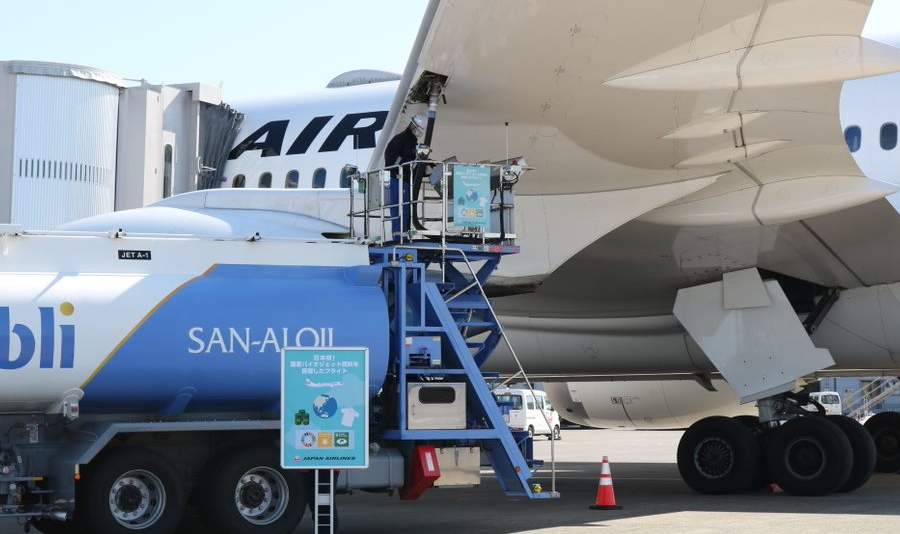
But now Airbus is also discussing the green hydrogen ecosystem as a means to produce sustainable aviation fuels. The aircraft manufacturer has previously stated that SAF will likely be the only long-term option for long-haul travel. This is because the energy density of hydrogen can’t really compete with existing fuels or SAF.
This brings us back to Power-to-Liquid (PtL). We have previously discussed carbon capture, i.e. getting CO2 directly from the atmosphere. This is one part of the PtL process. The other ingredient in the creation of this type of sustainable aviation fuel, is green hydrogen. This is the use of sustainable electricity, to electrolyze water into hydrogen and oxygen.
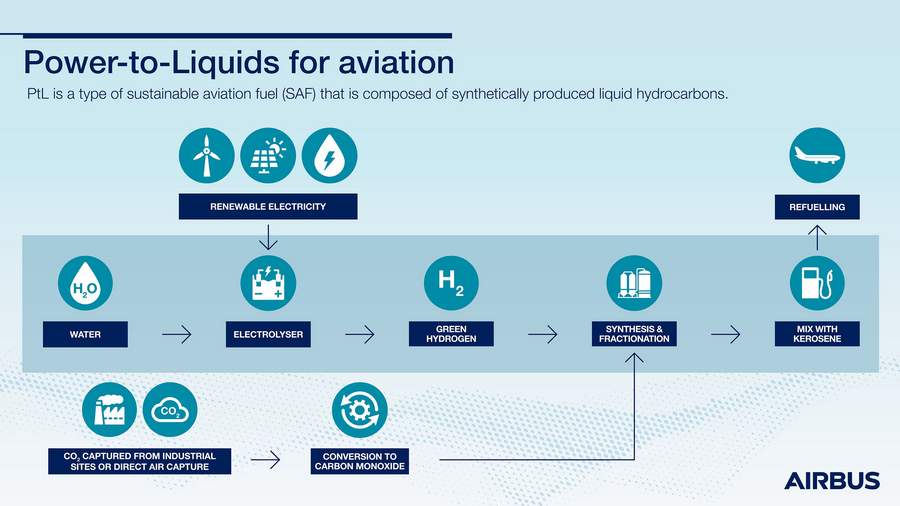
Scaling Sustainable Aviation Fuels And The Hurdle of Hydrogen
So Airbus wants to encourage more industries to produce green hydrogen, because this is key in creating sustainable aviation fuels. This is because at the moment, creating SAF in this way is quite expensive. And PtL is only one of several ways of creating these fuels. But between them, this synthetic SAF could be the only process that can realistically be scaled up enough to matter.
So Airbus is partnering with the Canada-based SAF+ Consortium, collaborating with industry players in creating this infrastructure. This includes the construction and operation of a pilot plant, producing sustainable aviation fuels, including the creation of green hydrogen. The initiative also includes partners like Air Transat, who have committed to buying this fuel.
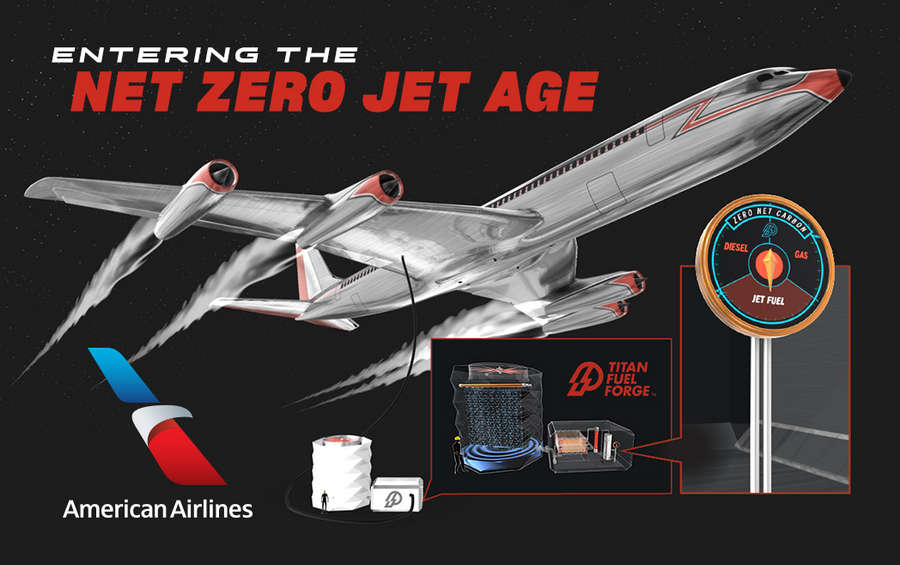
Airbus and the SAF+ Consortium are far from alone in pursuing such initiatives. American Airlines and Prometheus Fuels recently announced a partnership, with the same goals. Prometheus is working on making sustainable aviation fuels with a similar method, also utilizing hydrogen from water. They call the process ‘Electro-SAF’. American Airlines agreed to buy 10 million gallons of this fuel.
Inevitably, all this brings us back to the question of hydrogen-electric propulsion, or hydrogen combustion. With such sustainable aviation fuels in the works, why bother designing aircraft carrying hydrogen? The answer there has to do with the cost of making SAF in this manner. With hydrogen being a step in the process, using hydrogen could be more efficient. So if a form of hydrogen propulsion is possible in smaller, short-haul or regional aircraft, it could still be viable.

Other Players
Or could it? Interestingly, Prometheus believes that their Electro-SAF could be comparable in price to fossil-sourced jet fuel. That will be quite interesting to see, because it could very well upset some hydrogen plans. If airlines can source sustainable aviation fuels at similar prices to today’s Jet-A and Jet-A1, why bother with hydrogen? Also, the cost of creating a separate supply chain for hydrogen could be prohibitive.
Meanwhile, Boeing recently announced a partnership with SkyNRG, an SAF producer from the Netherlands. Their goal is to scale SAF globally. SkyNRG now have a US-based arm, called SkyNRG Americas. However, this company’s method of creating sustainable aviation fuels doesn’t involve hydrogen and carbon capture – at the moment.
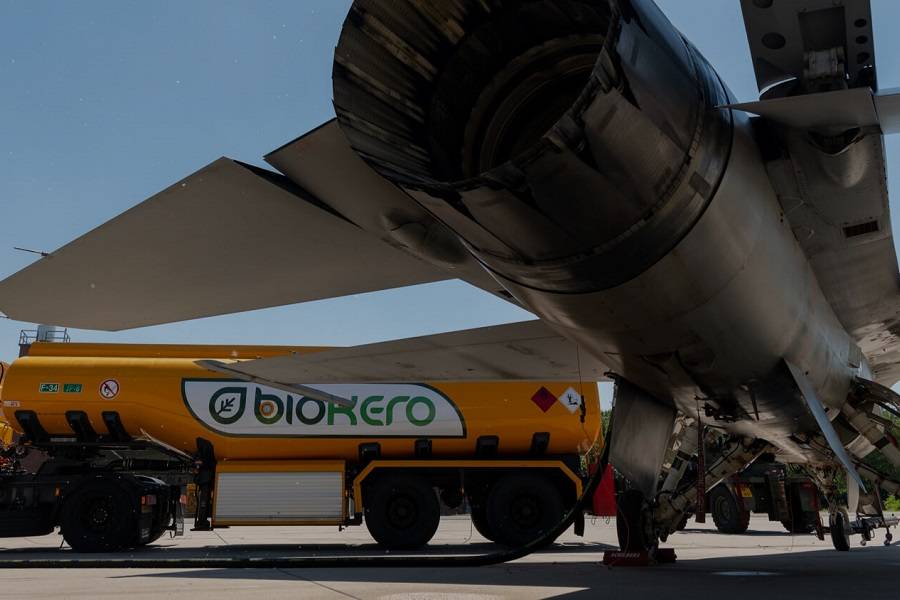
Until now, SkyNRG have been focusing on creating SAF from waste products. But as they scale up production, this could well change. The company already has experience creating these fuels, having supplied them to KLM and the Dutch Air Force.
This is a big topic, and it will take more time before we see what shape the future of aviation will have. But it is quite encouraging to see a convergence of goals, coming from such a divergence of ideas. We now have to wait and see if hydrogen will fuel our future airliners, or if it will only ‘fuel’ their supply chain!



